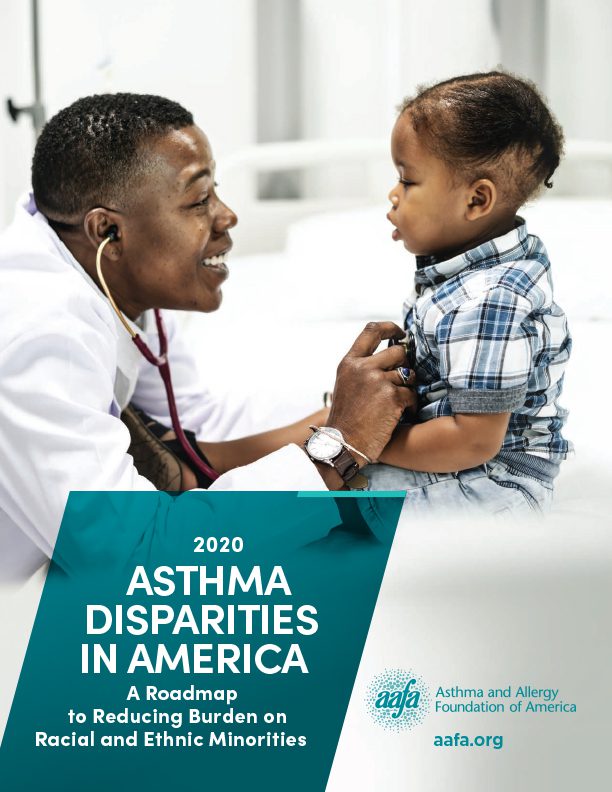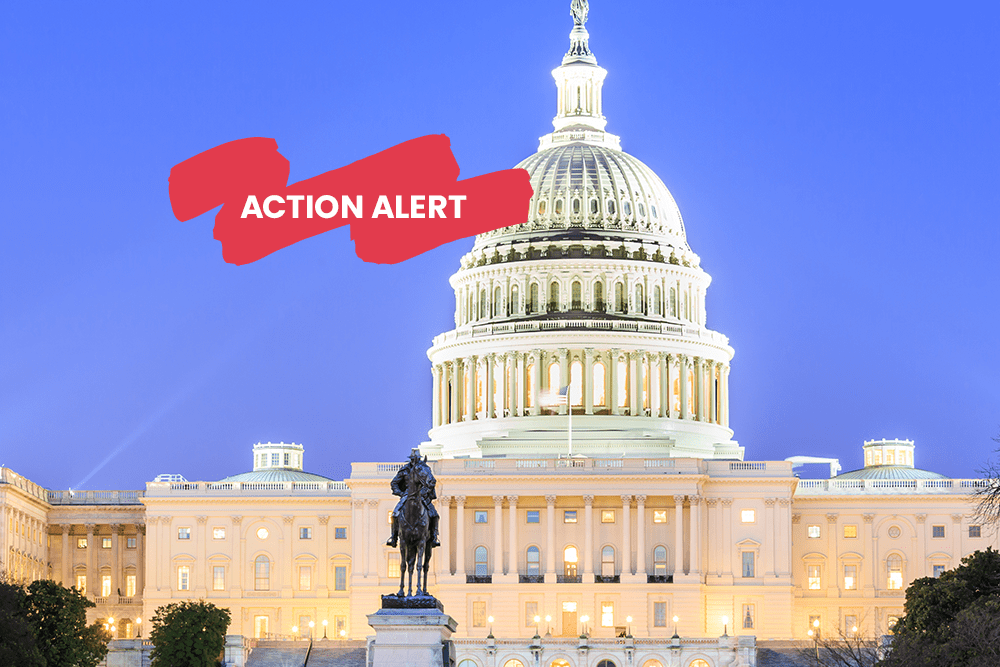Advocacy
Federal Programs and Funding
The Asthma and Allergy Foundation of America (AAFA) supports robust funding for a variety of U.S. federal agencies, policies and programs that benefit people with asthma and allergies.
Funding for these agencies, policies and programs ensures that:
- Government agencies can conduct vital research to develop cures
- Government agencies can address environmental asthma and allergy triggers and advance ways to prevent and manage asthma and allergies through research, education, and community-focused outreach
- Individuals with asthma and allergies have access to evidence-based clinical services
- Programs are in place to improve the care of individuals with asthma and allergies
AAFA supports maximizing funding for basic, clinical, preventive, and health services research. This includes supporting increased research funding for the National Institutes of Health (NIH), the CDC, and other agencies that conduct research on asthma and allergic diseases.
On April 1, 2025, the CDC laid off the entire staff of the National Asthma Control Program, effectively gutting the critical program. This program has saved lives and health care costs. These cuts threaten essential services for the 28 million people with asthma in the United States. Help us advocate to restore this vital program! Take action now
Closed
Funding for the Environmental Protection Agency
AAFA believes that all people should have healthy air to breathe and supports funding for the Environmental Protection Agency (EPA) and its programs that improve environmental health, including air quality.
EPA oversees several programs intended to promote energy efficiency, environmental stewardship, sustainable growth, air quality, and pollution prevention. The EPA also runs important programs to prevent, control, and respond to air pollution and enforces laws such as the Clean Air Act that directly impact individuals with asthma and allergies. The EPA has a coordinated approach to addressing environmental asthma and allergy triggers through research, education, and community-focused outreach.
EPA must be funded and empowered to carry out its work of promoting healthy communities and decreasing environmental health hazards for vulnerable populations. For example, indoor air quality in homes, schools and workplaces is a significant factor in the overall health and wellbeing of the population. The lack of funding mechanisms to pay for radon and indoor air mitigations is an ongoing problem. EPA must have sufficient funding for these efforts and should increase its investment in research to support program goals in this area.
AAFA supports robust funding for EPA to expand its role in protecting the environment. AAFA believes that there is an urgent need for EPA to receive annual appropriations that will help it rebuild and restore its historic role of protecting our environment through strong regulation and enforcement.
Funding for the Centers for Disease Control and Prevention
CDC’s Office on Smoking and Health must also be adequately funded. The office develops, conducts, and supports strategic efforts to protect the public’s health from the harmful effects of tobacco use, a critical trigger for asthma. The office supports comprehensive tobacco prevention and control programs in all 50 states, the District of Columbia, 8 US territories or jurisdictions, and 26 tribes/tribal organizations. It supports tobacco cessation and quitline services in 50 states, two territories, and Washington, D.C., and maintains the national network of tobacco cessation quitlines.2
Since 1999, millions of Americans have benefited from the CDC’s National Asthma Control Program (NACP). The goals of NACP include reducing the number of deaths, hospitalizations, emergency department visits, school days, or workdays missed, and reducing limitations on activity due to asthma.3 Today, CDC funds 25 state, territorial, and municipal health departments to ensure the availability of and access to guidelines-based medical management and pharmacotherapy for people with asthma. The program addresses the intersection of public health and health care by funding state programs and national organizations, promoting asthma quality measures, and informing policy makers about the burden of asthma.4 NACP has provided critical support to states working to improve the quality of asthma treatment and management. The program must have increased funding to decrease the number of emergency visits, hospitalizations and deaths caused by asthma each year. AAFA supports increased funding for NACP to sufficient levels that would allow all states and territories to have effective asthma control programs.
The CDC also conducts or funds research on asthma and allergies. CDC uses several surveys to conduct and analyze data related to asthma and allergies. CDC’s nationwide Behavioral Risk Factor Surveillance System (BRFSS) includes questions about asthma control and medication use. CDC’s National Health Interview Survey (NHIS) collects data on how often asthma causes days of restricted activity and days lost at work or school.
Funding for the Food and Drug Administration
The Food and Drug Administration’s (FDA) Center for Food Safety and Applied Nutrition, known as CFSAN, provides services to consumers, domestic and foreign industry, and other outside groups regarding field programs; scientific analysis and support; and policy, planning and handling of critical issues related to food and cosmetics. The office modernizes methods to find, track, and eliminate harmful germs and other hazards and evaluates the safety of new ingredients for food and the safety of new color additives.5 The office plays an important role for individuals with food allergies, including the development of important educational materials for those with food allergies.
Funding for the National Institutes of Health
Scientists at NIH continue to work to prevent and treat asthma and allergies. Three institutes lead asthma research at NIH: the National Institute of Environmental Health Sciences (NIEHS), the National Heart, Lung, and Blood Institute (NHLBI), and the National Institute of Allergy and Infectious Diseases (NIAID). NIAID is the lead institute at NIH conducting research on food allergies.
AAFA supports increased federal funding for asthma and allergy research. In particular, there are few food allergy treatments and more investment is needed in clinical research to develop new treatments and improve quality of life.
Funding for Department of Defense (Medical Research)
AAFA supports robust funding for Defense Health Research Programs, including the Congressionally Directed Medical Research Programs (CDMRP). Since fiscal year (FY) 1992, Congress has appropriated funds to the Department of Defense (DOD) explicitly for use in conducting medical research. Since its inception, annual congressional appropriations for CDMRP have grown from $25 million in FY1992 to $1.4 billion in FY2020.6 CDMRP views its role in the medical research community as a leader in advancing medical and scientific research and filling research gaps “by funding high impact, high risk and high gain projects that other agencies may not venture to fund.”7 Research dollars through this program could be used to support research on asthma or food allergy related issues.
References
- CDC’s Climate and Health Program, available at https://www.cdc.gov/climateandhealth/default.htm
- CDC’s Office on Smoking and Health, available at https://www.cdc.gov/tobacco/about/osh/index.htm
- Centers for Disease Control and Prevention. “CDC’s National Asthma Control Program.” (2022). https://www.cdc.gov/asthma/nacp.htm.
- Id.
- FDA’s Center for Food Safety and Applied Nutrition, available at https://www.fda.gov/about-fda/center-food-safety-and-applied-nutrition-cfsan/what-we-do-cfsan
- Congressional Research Service, Congressionally Directed Medical Research Programs: Background and Issues for Congress, November 10, 2020.
- Overview of the Congressionally Directed Medical Research Programs, available at https://www.ncbi.nlm.nih.gov/books/NBK424514/












